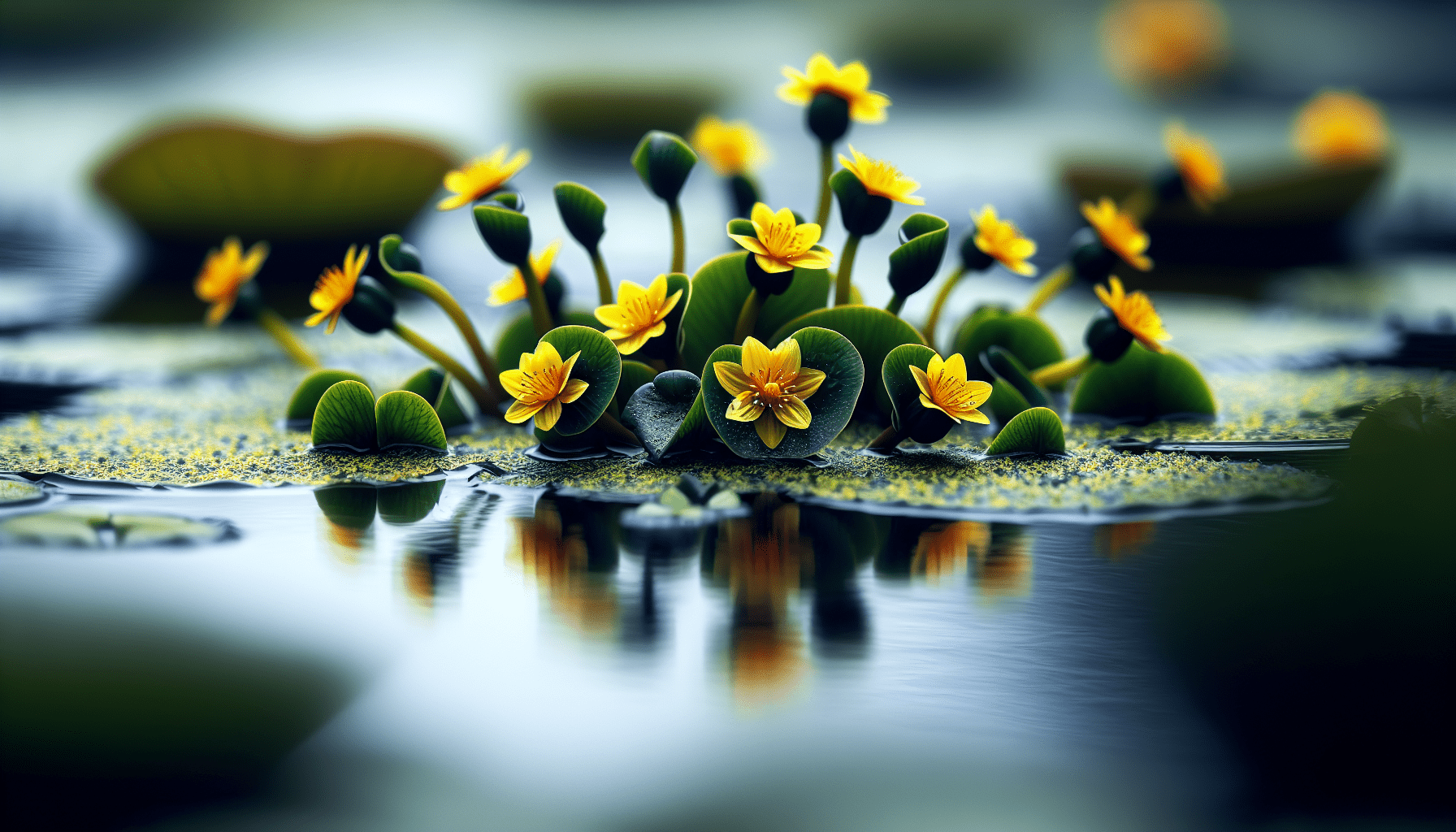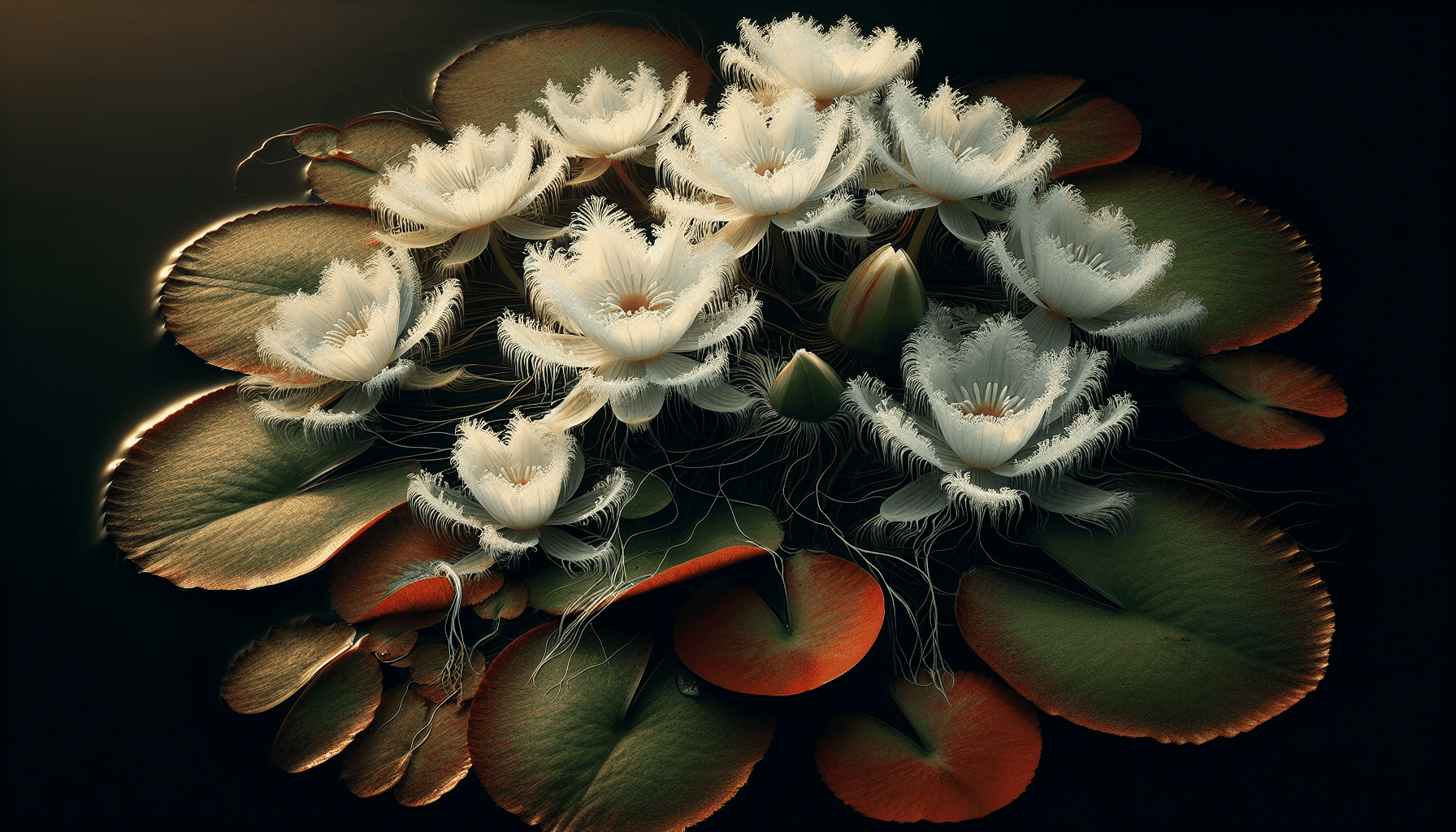In the fields of botany and environmental science, it is crucial to discern the many species of flora that occupy our world, particularly those that have the potential to alter our ecosystem drastically. An understanding of the aqueous plant Nymphoides Indica is of high importance given its classification as an invasive weed. This article offers an exploration into the nature of Nymphoides Indica, an aquatic weed, characterized by its brilliant white flowers and heart-shaped leaves, which despite its serene appearance, poses significant challenges in worldwide water systems due to its intrusive growth patterns. Throughout this reading, you’ll acquire a nuanced understanding of the weed’s anatomy, its ecological impact, and the measures implemented to regulate its proliferation.

Definition of Nymphoides Indica
Nymphoides indica is a perennial aquatic plant that belongs to the Menyanthaceae family. Commonly named as water snowflake, this floating plant is recognized for its unique yellow-white flowers and round to oval, green leaves.
Scientific classification of Nymphoides Indica
As a tropical aquatic plant, Nymphoides indica’s scientific classification ascribes it to the Plantae kingdom and Menyanthaceae family. Its genus, Nymphoides, consists of numerous aquatic flowering plants, while indica denotes it as a variant indigenous to the Indian subcontinent.
Common terms or names for Nymphoides Indica
Nymphoides indica is referred to by a number of common names including water snowflake, floatingheart, and banana plant. These names often relate to its physical attributes and behavior, particularly its floating leaves and beautiful white flowers that may indeed remind onlookers of gentle snowflakes floating on the water surface.
Physical characteristics of Nymphoides Indica
You will find the Nymphoides indica depicted with heart-shaped to round, floating leaves with a unique sinus at the leaf base. It is most noteworthy for its bright white to yellow flowers, embellished by fringed petals. Each flower has five petals and produces a capsule-like fruit after fertilization. The flowers are borne on long stalks that rise from the leaf axils. Interestingly, the submerged parts of the plant are often reddish while the floating parts are typically deep green.
Habitat and Distribution of Nymphoides Indica
Preferred environmental conditions
As an aquatic species, Nymphoides indica thrives in fresh water bodies including stagnant or slow-moving waters such as ponds, lakes, canals and marshes. This plant prefers a tropical climate, and is known to survive in a variety of light conditions, from full sunlight to considerable shade.
Geographical regions where Nymphoides Indica is found
Nymphoides indica’s natural habitats extend across tropics and subtropics worldwide. Originally from the Indian subcontinent, its range has expanded to Southeast Asia, Australia, Africa, and more recently to South and Central Americas.
Life Cycle and Growth of Nymphoides Indica
Stages of growth
Nymphoides indica’s growth commences with its seeds germination under suitable conditions. The seedlings soon develop into floating plants bearing heart-shaped leaves and elegant flowers. Following pollination, these flowers give rise to fruits encapsulating the seeds. The mature fruits later release seeds ensuring the next generation of Nymphoides indica plants.
Seasonal changes in Nymphoides Indica
The flowering season for Nymphoides indica typically falls between spring to early autumn depending on geographic locations and prevailing climatic conditions. Its growth may slow during colder periods, causing the plant to somewhat retreat into the water bodies.
Rate of growth and spread
This aquatic plant is known for its rapid growth and ability to spread quickly, often sprawling over large areas of water bodies in a relatively short span of time.

Ecological Impact of Nymphoides Indica
Impact on native species and ecosystems
While being a native small component of many aquatic ecosystems, Nymphoides indica can, in certain conditions, outcompete and displace native plants thereby possibly disturbing the balance within the ecosystem. Its fast growth and spreading nature might disrupt light availability for submerged plants and could also affect water-dwelling animals.
Potential benefits to the environment
Despite its potential adverse effects, Nymphoides indica serves as an important habitat and food source for several aquatic creatures. It also plays a significant role in filtering and improving water quality by absorbing excess nutrients and heavy metals.
Cultivation and Utilization of Nymphoides Indica
Use in aquariums and ponds
Nymphoides indica is popularly used as an ornamental plant in aquariums and garden ponds for its stunning snowflake-like flowers. Its distinct floating foliage provides aesthetic value and also creates an ideal habitat for various aquatic animals.
Medicinal uses
In traditional medicine, especially in Asia, different parts of the Nymphoides indica plant have been used to treat a variety of illnesses including skin conditions, infections and digestive disorders.
Culinary uses
In some cultures, the young leaves and shoots of Nymphoides indica are consumed, often blanched or served as a salad component.
Threats to Nymphoides Indica Species
Environmental threats
Drying up of water bodies, pollution, and the introduction of invasive species are among the key environmental threats that Nymphoides indica faces.
Human-induced threats
Overharvesting for both ornamental and medicinal purposes, disruptive human activities and habitat destruction are some of the human-induced threats to this aquatic plant.
Impact of climate change
Climate change, with its extreme weather conditions and shifting temperature patterns, can significantly impact the growth and survival of Nymphoides indica.
Control and Management of Nymphoides Indica
Methods of control
Control strategies primarily involve physical removal of the plant from water bodies. Additionally, biological control methods using appropriate herbivorous fish species have also been proposed.
Challenges in control and management
Tackling the fast growing and rapidly spreading nature of Nymphoides indica proves challenging in control and management, apart from the risk of disrupting other aquatic species during the removal process.
Best practices in management
The best strategy involves a combination of vigilant monitoring to early detect any growth, along with an integrated management approach including manual removal and possibly biological controls.
Nymphoides Indica and Biodiversity
Nymphoides Indica’s role in supporting biodiversity
Nymphoides indica contributes significantly towards aquatic biodiversity by providing food and habitat to a multitude of aquatic species. Its role in sustaining a balanced and diverse ecosystem remains vital.
Effect on water bodies’ biodiversity
A dense growth of Nymphoides indica could potentially limit the biodiversity in water bodies by outcompeting native plants for light and nutrients and thereby affecting the associated food chain.
Legal and Regulatory Aspects of Nymphoides Indica
Local laws and guidelines
Local laws and guidelines regarding the cultivation, trade, and management of Nymphoides indica vary extensively across regions depending largely on its invasive potential. In certain regions, regulations may prohibit its introduction into non-native environments.
International regulations
International regulations concerning the transfer of Nymphoides indica are guided by environmental and biosafety conventions aiming to prevent potential threats from invasive species.
Research on Nymphoides Indica
Current research and findings
Current research on Nymphoides indica ranges from understanding its ecological impact, medical potential, to exploring its use in water remediation practices.
Areas for future research
Future research should aim to better understand the environmental and ecological impact of Nymphoides indica under varying climate change scenarios. Research should also focus on exploring undiscovered medicinal potentials and its effective control strategies.
